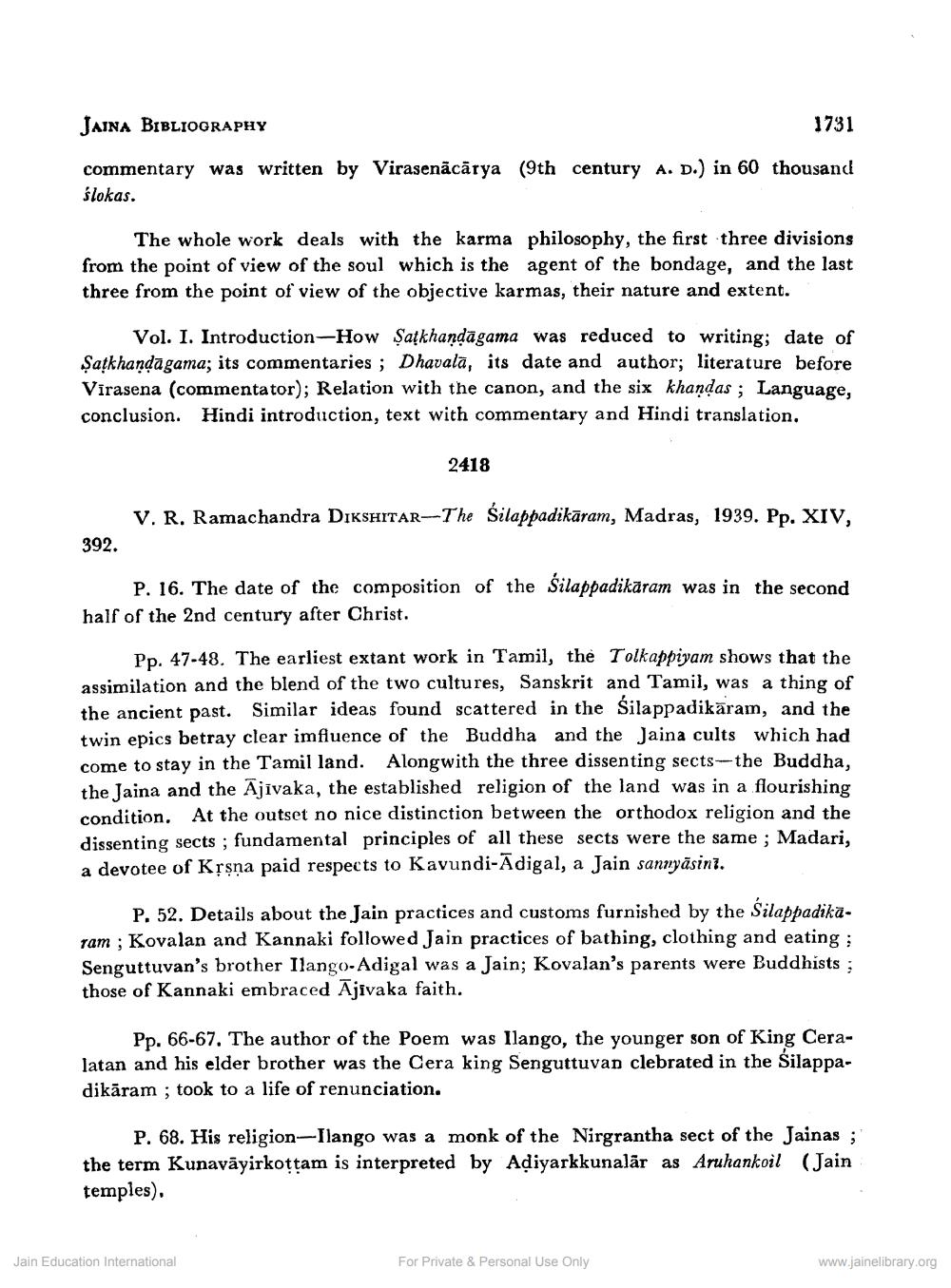________________
JAINA BIBLIOGRAPHY
1731
commentary was written by Virasenācārya (9th century A. D.) in 60 thousand ślokas.
The whole work deals with the karma philosophy, the first three divisions from the point of view of the soul which is the agent of the bondage, and the last three from the point of view of the objective karmas, their nature and extent.
Vol. I. Introduction-How Şaškhandāgama was reduced to writing; date of șațkhandagama; its commentaries ; Dhavalā, its date and author; literature before Virasena (commentator); Relation with the canon, and the six khandas ; Language, conclusion. Hindi introduction, text with commentary and Hindi translation,
2418
V. R. Ramachandra DIKSHITAR-The Silappadikāram, Madras, 1939. Pp. XIV,
392.
P. 16. The date of the composition of the silappadikāram was in the second half of the 2nd century after Christ.
Pp. 47-48. The earliest extant work in Tamil, the Tolkappiyam shows that the assimilation and the blend of the two cultures, Sanskrit and Tamil, was a thing of the ancient past. Similar ideas found scattered in the Silappadikäram, and the twin epics betray clear imfluence of the Buddha and the Jaina cults which had come to stay in the Tamil land. Alongwith the three dissenting sects-the Buddha, the Jaina and the Ajivaka, the established religion of the land was in a flourishing condition. At the outset no nice distinction between the orthodox religion and the dissenting sects ; fundamental principles of all these sects were the same ; Madari, a devotee of Krsna paid respects to Kavundi-Adigal, a Jain sannyäsinz.
P. 52. Details about the Jain practices and customs furnished by the Silappadikaram ; Kovalan and Kannaki followed Jain practices of bathing, clothing and eating ; Senguttuvan's brother Ilango-Adigal was a Jain; Kovalan's parents were Buddhists ; those of Kannaki embraced Ājivaka faith.
Pp. 66-67. The author of the Poem was llango, the younger son of King Ceralatan and his elder brother was the Cera king Senguttuvan clebrated in the Silappadikāram ; took to a life of renunciation.
P. 68. His religion-Ilango was a monk of the Nirgrantha sect of the Jainas ; the term Kunavāyirkottam is interpreted by Adiyarkkunalar as Aruhankoil (Jain temples).
Jain Education International
For Private & Personal Use Only
www.jainelibrary.org




